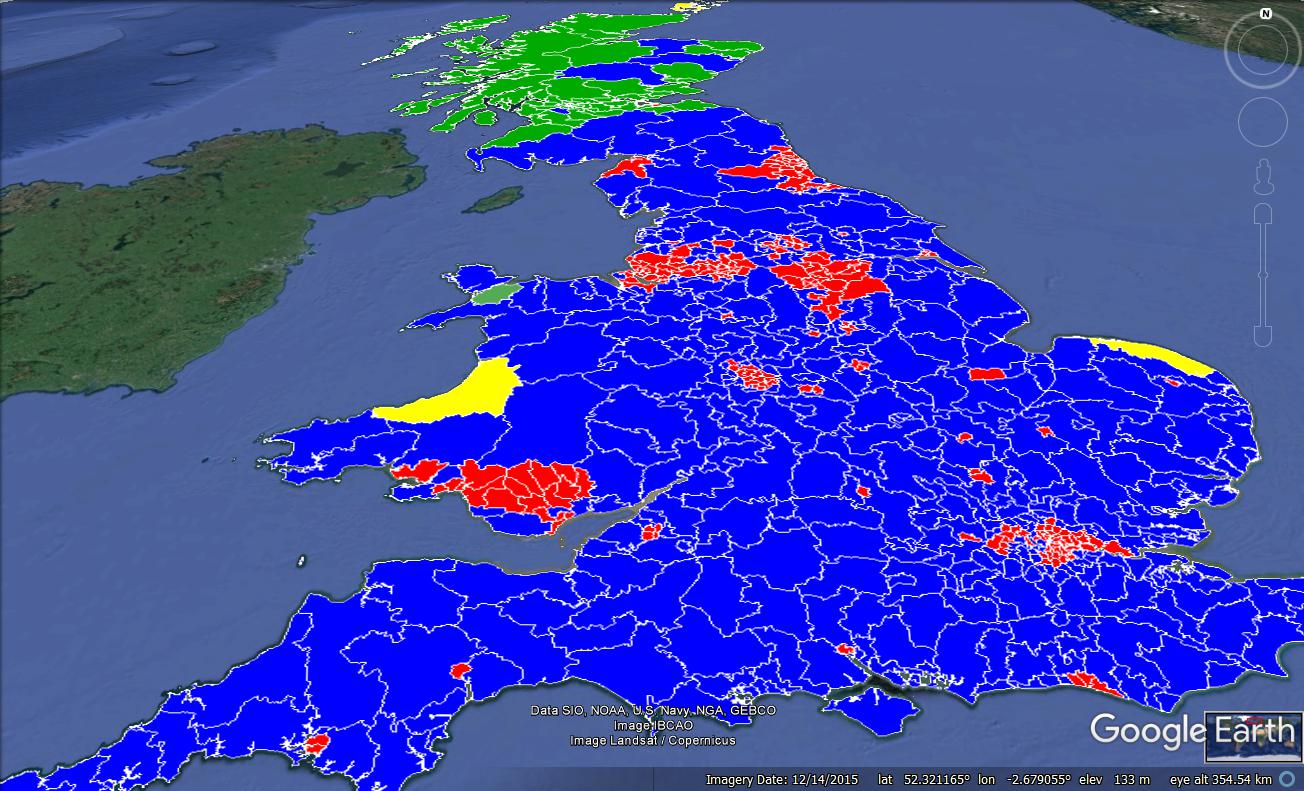The overall average (and seat totals) for the parties in the polls ending between May 16th and 20th in the UK General Election were as follows :
| CONSERVATIVES | 46% | 378 seats |
| LABOUR | 34% | 201 seats |
| LIBERAL DEMOCRATS | 8% | 3 seats |
| UNITED KINGDOM INDEPENDENCE PARTY | 4% | |
| SCOTTISH NATIONALIST PARTY | 4% | 49 seats |
| PLAID CYMRU | 1% | 1 seat |
| GREENS | 2% |

The Conservatives are up 8 points since 2015 and would gain 48 seats – however the first polls afte rthe election was called suggested they would gain 125 seats. The reason for this drop in projected gains is not so much the small drop in Tory support since then but rather the fact that Labour have closed the gap somewhat from 23 points to 12 points. They would gain particularly amongst older voters (up 17% since 2015 – although these polls were conducted before the Tory Manifesto was revealed), working-class voters and voters in Wales, Scotland and the North. By contrast, their vote amongst younger voters has actually dropped slightly since 2015. Their support amongst Remainers has decreased by 5 points during the campaign – their support amongst Leavers has increased slightly. The Tories would win 131 of the 159 most middle-class constituencies, compared to 28 of the 139 most working-class constituencies. They also win 196 of the 220 constituencies with the Oldest age profile, compared to 24 of the 122 constituencies with the youngest age profile.
Labour have held onto their younger vote – in fact they have significantly increased it (up 12% since 2015), but lose amongst older voters. They started off the campaign behind The Tories practically everywhere but now lead them in London and the North and are tied with them in Wales – which is a big improvement on the near-complete wipeout there suggested by previous polls.They are significantly more popular amongst women than with men. Labour would win just 25 of the 159 most middle-class constituencies, compared to 93 of the 139 most working-class constituencies. They win only 12 of the 220 constituencies with the oldest age profile, compared to 90 of the 122 constituencies with the youngest age profile.
The Liberal Democrats have fallen three points since the start of the campaign, and so are back at their 2015 figure. However, they are in danger of losing some of their 8 seats – though local particularities and tactical voting might mean the outcome won’t be as severe as this projection suggests. They fare markedly better amongst middle-class voters, and 5 out of every 6 Liberal Democrats are Remain voters, due partly to a small influx of Remain voters from other parties, but more because of an exodus of 2015 Liberal Democrat voters who voted LEAVE – it seems only 2 out of every 5 intend to stick with the LibDems, and a similar number intend to vote for the Tories.
UKIP entered the campaign with just over half their 2015 vote and now have as little as a third of it. The majority of 2015 UKIP voters now say they are going to vote Conservative. They do best amongst working-class voters, and the vast majority of UKIPers are Leave voters.
The SNP would still retain a huge majority of the seats in Scotland, even though their vote is down somewhat.
The Conservatives been very successful in retaining their 2015 voters, with 9 out of 10 saying there are sticking with them. In addition over half of 2015 UKIP voters and 1 in 6 2015 Liberal Democrat voters (and 1 in ten 2015 Labour voters) are now intending to vote for the Conservatives. Of Particular interest is that, despite the fact that the Conservatives are implementing Brexit, they are managing to hang on to more than 5 out of 6 of their 2015 voters who voted REMAIN in 2016 (source : ICM polls). This compares to Labour only currently retaining 2 out of 3 of their LEAVE voters, and the Liberal Democrats only retaining 1 out of 3 of their Leave Voters.
In fact the Liberal Democrat support base seems to be in considerable flux – under 60% of those currently intending to vote LibDem voted for the party in 2015 (one in 6 are former Tory voters, 1 in 5 are former Labour voters) – on the other side 2 out of every 5 of their 2015 voters are now voting for either the Conservatives or Labour (now splitting slightly in favour of the latter).
At the time of the Brexit Referendum The Tories were virtually tied with UKIP amongst Leave voters – they started this campaign 50 points ahead of them, and have now moved sixty points ahead reflecting polling showing that the bulk of 2015 UKIP voters are now intending to vote Conservative. By contrast, The Tories started the campaign again virtually tied with Labour amongst Remain Voters – but have now fallen 20 points behind them amongst this cohort.
Download The Report here : UK May 16 to May 20